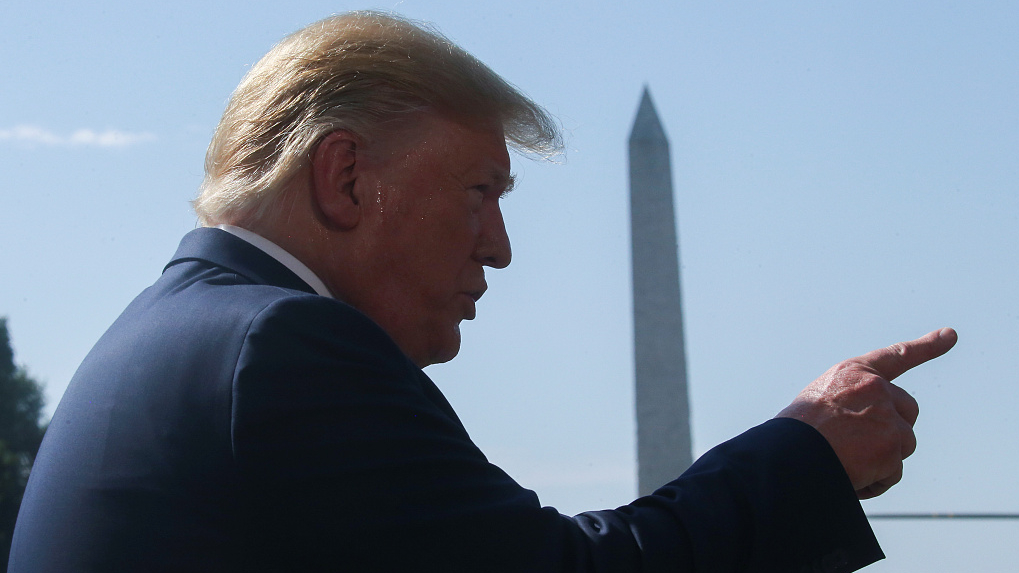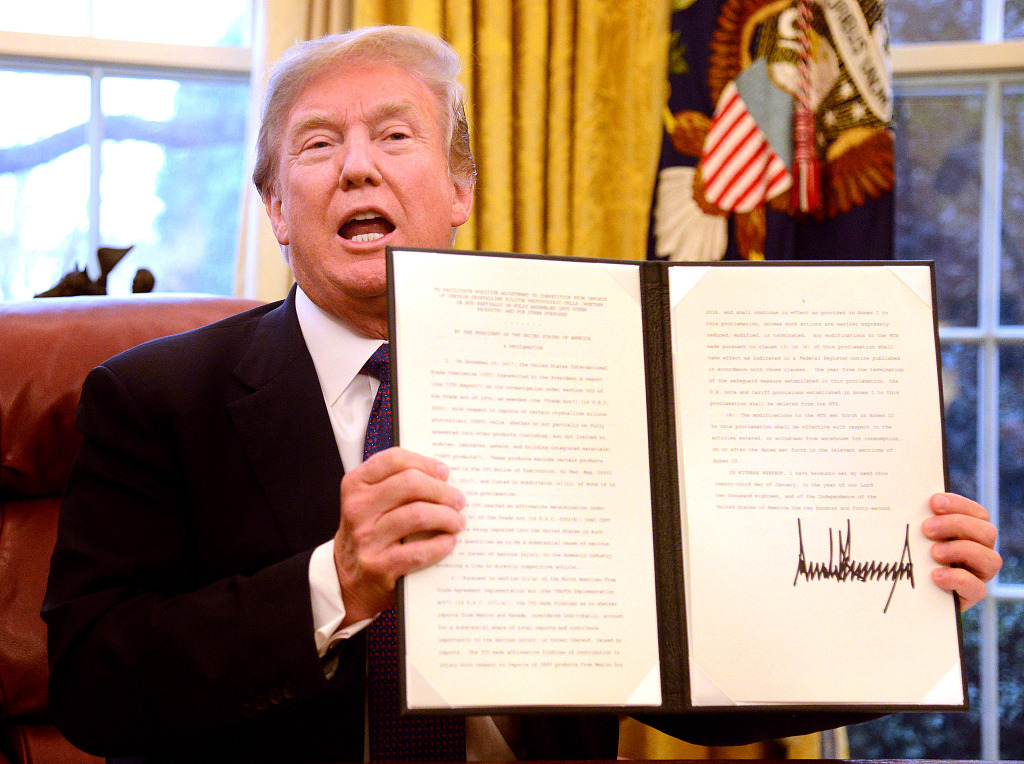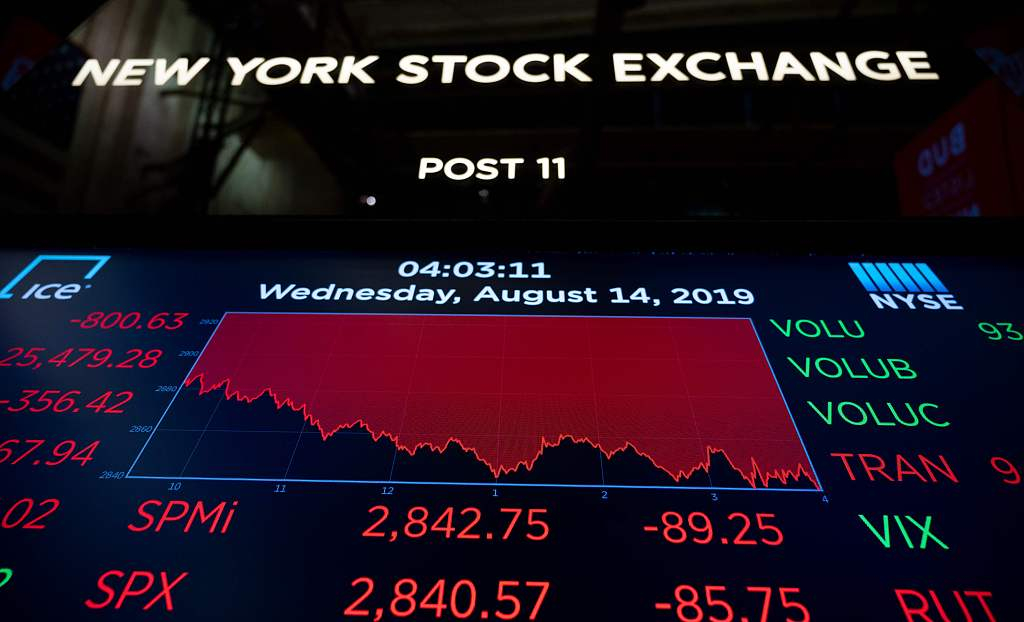

Editor's note: Huang Jiyuan is an opinion editor with CGTN Digital. The article reflects the author's opinions, and not necessarily the views of CGTN.
For the past several months, U.S. President Donald Trump was quite respectful towards China's position on the instability in Hong Kong. "Hong Kong is a part of China… they don't need advice." These were his exact words when he was interviewed by the press on the south lawn of the White House on August 1. And despite pressure from the public and the Congress, his rhetoric remained steadfast in acknowledging China's sovereignty and expressing confidence in China's ability to solve this internal issue.
This has all changed. "If President Xi would meet directly and personally with the protesters…" These were his words on August 15. For the first time, Trump has made an explicit suggestion about the resolution of the issue. To many observers, this might be a manifestation of Trump bowing to domestic pressure. After all, part of the American public and congressional leaders have all expressed support for the protesters, and they have been pressing Trump to do the same for the past couple of weeks.
However, those who focus on domestic factors are ignoring the larger picture. His latest statement on Hong Kong signals a fundamental change of strategy. No matter how hard American politicians have tried to deny it, Hong Kong and the trade war are tied together. They are points of conflict between the two nations. For the past several months, Trump has tried to deal with these two issues separately by keeping himself out of Hong Kong's affairs while tackling trade issues with China.

Up until now, Trump's campaign against China has mainly been conducted through using trade tools. His tweets about Hong Kong marks a turning point. The picture shows him signing tariff on Chinese imports. /VCG Photo
Not anymore. By suggesting a course of action for President Xi Jinping, Trump has not just inserted his opinion into the issue. Consider this: under what circumstances would a political leader arrange a formal meeting with someone else to negotiate? Only when the attendee is his counterpart from another nation or someone with similar stature. However, these are people who have rioted in the streets, vandalized the symbol of the country, hurt law enforcement officers, and brought the city to a halt for more than three months. They are mobs. They are neither a counterpart nor have a similar stature to the leader of a country. Trump's suggestion has elevated their political position without saying so directly. Such an act could be interpreted as the president of the United States, giving protesters legitimacy, thus strengthening them.
Through this, President Trump has tied the China-U.S. trade war and Hong Kong together. He has now placed the two issues on the same bargaining table. This is a logical change of strategy on his part. After his rash decision to announce a 10 percent raise of tariffs, American consumers and Wall Street rebuked him. The stock market tanked, economists rejected his rationale, and consumers panicked at the inevitable price hike. Trump was forced to delay the tariff to December in order to avoid the "holiday season" when a large amount of purchase is to be made by the American public.

Stocks reacting to the market turbulence contributed to by Trump's tariffs, in New York Stock Exchange in New York City, August 14, 2019. /VCG Photo
This is a rare show of defeat for Trump. And since then, he has been thrown off his balance on trade. China has shown him that it is confident in its ability to deal with the tariffs. Trump has lost his momentum in forcing a deal out of China through intimidation.
Therefore, Hong Kong has become the lateral move. By wading into the Hong Kong issue, Trump is gathering cards for negotiation. His singular focus is on making a deal with China. And since China has called his bluff on the tariffs, Hong Kong has now become the handle through which he would exert pressure onto the government in Beijing. He is a businessman, and it is proven that he has no love for the so-called "democratic movement." But, sovereignty is at the core of China's national interest. By voicing his opinion on Hong Kong, he can use the protests to play on the sovereignty issue and pressure China to make concessions to his trade deal while remaining detached enough to make himself non-interfering in China's internal politics.
For several months, the trade war and protests in Hong Kong remained two relatively separate issues. Trump's tweet on August 15 changed the calculus. To him, the two issues are tightly intertwined now. To resolve one thing has to resolve both. Hong Kong is now placed by Trump on the China-U.S. trade negotiation table. The protesters are now being used not just by some U.S. politicians, but by the U.S. president himself. And just as the tariff strategy has failed to force a capitulation out of China, using Hong Kong as a bargaining chip wouldn't achieve it either.
(If you want to contribute and have specific expertise, please contact us at opinions@cgtn.com.)

Copyright © 2018 CGTN. Beijing ICP prepared NO.16065310-3
Copyright © 2018 CGTN. Beijing ICP prepared NO.16065310-3